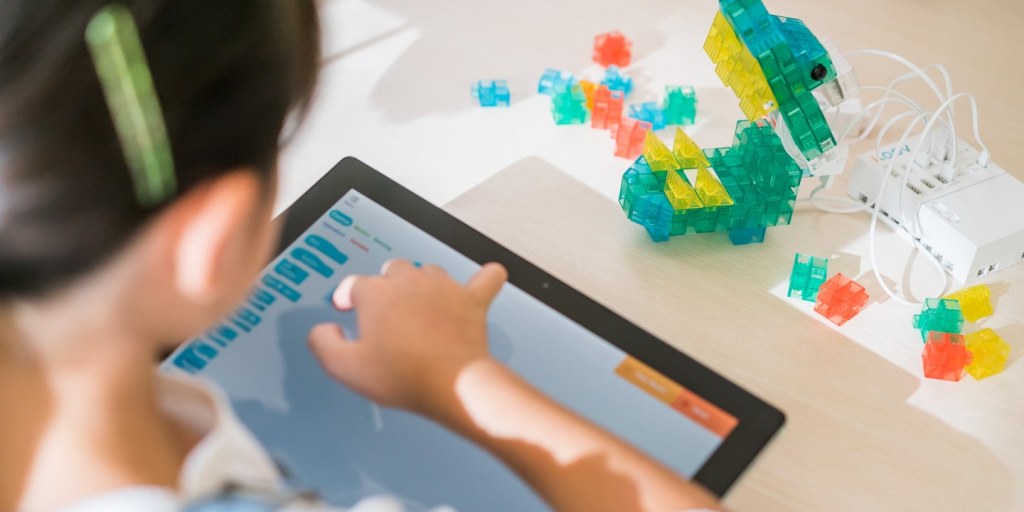Unleashing The Power Of Technological Innovation Learning: Propel Your Success Now!
Technological Innovation Learning: Unleashing the Power of Technology in Education
Introduction
Hello readers! Welcome to an exciting journey into the world of technological innovation learning. In today’s digital age, technology has become an integral part of our lives, transforming the way we live, work, and learn. In this article, we will explore the concept of technological innovation learning, its benefits, and how it is revolutionizing education.
1 Picture Gallery: Unleashing The Power Of Technological Innovation Learning: Propel Your Success Now!

Technological innovation learning refers to the integration of technology into the learning process to enhance and enrich educational experiences. It goes beyond traditional teaching methods, incorporating digital tools, online resources, and interactive platforms to engage students and promote active learning.

Image Source: eletsonline.com
Now, let us dive deeper into the various aspects of technological innovation learning and discover its immense potential.
What is Technological Innovation Learning? 🌐
Technological innovation learning is a pedagogical approach that leverages technology to enhance learning outcomes. It involves the use of digital devices, software applications, and online platforms to facilitate interactive and personalized learning experiences. This approach encourages students to actively participate in the learning process, collaborate with peers, and explore new ideas.
With technological innovation learning, traditional classrooms are transformed into dynamic learning environments where students can access a wealth of information, engage in real-world simulations, and develop critical thinking and problem-solving skills.
Advantages of Technological Innovation Learning 📚
1. Enhanced Engagement: Technology-based learning captures students’ attention and makes learning more interactive and enjoyable. It stimulates their curiosity, leading to increased engagement and motivation.
2. Personalized Learning: Technological tools enable personalized learning experiences, catering to individual students’ needs, interests, and learning styles. Students can progress at their own pace and receive immediate feedback.
3. Access to Information: The internet provides access to a vast amount of information, enabling students to explore various topics and deepen their understanding. They can access online libraries, research papers, and educational videos.
4. Collaboration and Communication: Technology facilitates collaboration among students, allowing them to work on projects together, share ideas, and communicate effectively. It promotes teamwork and prepares students for the collaborative nature of the modern workplace.
5. Real-World Simulations: Virtual reality (VR) and augmented reality (AR) technologies provide immersive learning experiences, allowing students to explore and interact with simulations that replicate real-world scenarios.
Disadvantages of Technological Innovation Learning ⚠️
1. Overreliance on Technology: Excessive dependence on technology may hinder students’ ability to think critically, solve problems independently, and develop essential skills that are not technology-dependent.
2. Technological Barriers: Not all students have equal access to technology and the internet, creating a digital divide. This can result in disparities in educational opportunities and hinder the effectiveness of technological innovation learning.
3. Distractions: The presence of technology in the classroom can be distracting for some students. They may be tempted to browse the internet, play games, or engage in non-educational activities instead of focusing on the learning material.
4. Technical Issues: Technological glitches, such as network connectivity problems or software malfunctions, can disrupt the learning process and cause frustration among students and teachers.
5. Security and Privacy Concerns: The use of technology in education raises concerns about data privacy and security. Schools and educational institutions must ensure that student information remains protected and secure.
Who Can Benefit from Technological Innovation Learning? 🎓
Technological innovation learning is not limited to a specific group of individuals. It can benefit students of all ages, educators, and even professionals seeking to upgrade their skills. Let’s explore how different stakeholders can leverage technological innovation learning:
For Students:
1. Students can gain access to a wide range of resources, making learning more comprehensive and engaging.
2. They can develop essential skills for the future job market, such as digital literacy, critical thinking, and problem-solving.
3. Technological innovation learning encourages independent learning and self-motivation, preparing students for lifelong learning.
For Educators:
1. Educators can utilize technology to create interactive lessons and assessments that cater to diverse learning styles.
2. They can track students’ progress more effectively and provide personalized feedback and support.
3. Technology allows educators to access a vast array of teaching resources, collaborate with other educators, and stay updated with the latest educational trends.
For Professionals:
1. Professionals can engage in online courses and webinars to acquire new skills or upgrade their existing knowledge.
2. They can access online platforms for continuous professional development, enabling them to stay competitive in their respective fields.
3. Technological innovation learning provides flexibility and convenience, allowing professionals to learn at their own pace and schedule.
When and Where to Implement Technological Innovation Learning? ⏰
Technological innovation learning can be implemented in various educational settings, including:
– Traditional classrooms in schools and universities.
– Online learning platforms and virtual classrooms.
– Continuing education and professional development programs.
– Corporate training and workshops.
This pedagogical approach can be implemented at any stage of education, from primary schools to higher education institutions, and across different disciplines.
Why Choose Technological Innovation Learning? 🤔
Technological innovation learning offers numerous advantages over traditional teaching methods:
1. It enhances student engagement and motivation, leading to better learning outcomes.
2. Students develop essential skills for the future, preparing them for the challenges of the digital age.
3. Technology provides access to a wealth of information and resources, fostering independent and lifelong learning.
4. Collaborative learning and communication skills are nurtured in technology-rich environments.
5. Technological innovation learning promotes creativity and innovation, enabling students to think outside the box.
How to Implement Technological Innovation Learning? 📲
Implementing technological innovation learning requires careful planning and consideration. Here are some steps to get started:
1. Assess the needs and goals of your students or organization.
2. Identify suitable technologies and digital tools that align with your objectives.
3. Provide training and support to students, educators, or professionals to ensure effective use of technology.
4. Integrate technology into lesson plans or training programs, ensuring it complements the learning objectives.
5. Continuously evaluate and adapt your approach based on feedback and student outcomes.
Frequently Asked Questions (FAQs) ❓
1. Is technological innovation learning only applicable to STEM subjects?
No, technological innovation learning can be applied to all subjects and disciplines. It enhances learning experiences across various fields, including humanities, arts, and social sciences.
2. How can schools ensure equal access to technology for all students?
Schools can implement initiatives to provide technology and internet access to disadvantaged students, such as establishing computer labs, offering loaner devices, or partnering with organizations that provide technology resources.
3. What are some examples of technological tools used in innovative learning?
Examples include educational apps, interactive whiteboards, virtual reality headsets, online collaboration platforms, and learning management systems.
4. Can technological innovation learning replace traditional teaching methods completely?
No, technological innovation learning should complement traditional teaching methods. It is a tool to enhance and enrich the learning experience, not a substitute for human interaction and guidance.
5. How can companies benefit from implementing technological innovation learning?
Companies can leverage technological innovation learning to upskill their workforce, foster a learning culture, and adapt to the rapidly changing business landscape.
Conclusion: Embracing the Future of Education 📚
As we conclude our exploration of technological innovation learning, it is evident that this pedagogical approach holds immense potential to revolutionize education. By harnessing the power of technology, we can create dynamic and engaging learning environments that empower students, educators, and professionals alike.
So, let us embrace technological innovation learning and unlock a world of possibilities for the future of education.
Final Remarks
In this rapidly evolving digital era, technological innovation learning has become more important than ever. It is essential for individuals to continuously adapt and learn in order to thrive in the modern world. However, it’s important to acknowledge that technology is not a panacea and should be used strategically to complement traditional teaching methods.
As we embrace technological innovation learning, let us also ensure equal access to technology for all, address potential disadvantages, and prioritize students’ well-being and development. By leveraging technology effectively and responsibly, we can shape a brighter future for education.
This post topic: Technology Innovation


